New Concept IPT
With 3 folks already signed up and one more from California looking for flights it is looking as if folks are liking the idea of more image review during the days, more in-the-field-instruction with a smaller group, no time in the classroom, and a bit more time to rest and sleep…. Learn more by clicking here and scrolling down to the first item.
Pro-rated
If you would like to explore the possibility of joining us for a day or two on this IPT or a morning on the Hooptie Deux please e-mail me asap or call me on Sunday or Monday morning on my personal line at 863-692-2806.
Fort DeSoto/Hooptie Deux/Roseate Spoonbill Short Notice IPT: March 6-10, 2013. 5-DAY: $2399 (Includes 3 mornings on the Hooptie Deux). Limit: 6/Openings: 2.
Join me as part of a small group for five great days of bird photography and learning. We will spend three mornings with the breeding plumage spoonbills on James Shadle’s customized pontoon boat, the Hooptie Deux. This alone would cost you $1050 so this works out to the cheapest IPT ever: 5 full days for only $1349. We will spend two of our mornings and four of our afternoons at Fort DeSoto photographing all manner of wading birds, gulls, terns, and almost surely some Great Horned Owl chicks. Our last afternoon will be spent at an active Wood Stork rookery with lots of flight photography opportunities.
|
This stitched pano of a scratching Royal Tern was created from two images made on last Monday’s In-the-Field Workshop at Fort DeSoto with the tripod-mounted Canon EF 600mm f/4L IS II USM lens, the Canon 2x EF Extender III (Teleconverter), and the Canon EOS-1D X Digital SLR camera. ISO 400: 1/1600 sec. at f/8 in Manual Mode confirmed via histogram check. Central sensor (by necessity) Expand/AI Servo/Rear Focus AF on the base of the bill where it meets the head and recompose. Click here if you missed the Rear Focus Tutorial. Click on the image to see a larger version. You cannot beat the 600II/2XIII TC combo for reach (with phase detection AF). |
Comparing the Canon 500mm f/4L IS II and the Canon 600mm f/4L IS II
Many folks have written asking for advice on which of these two great lenses to purchase. If you have that dilemma you are truly blessed as the price tag on each is borderline astronomical. I am pretty blessed myself as I own one of each. Let’s make a category by category comparison of the Canon 500mm f/4L IS II vs. Canon 600mm f/4L IS II lenses.
Cost
The cost of a new 500 II at B&H is $10,399 while the current B&H price tag on the 600 II is $12,799. You will not find either lens for a penny less anywhere. The big advantage here for most folks goes to the 500 II. Let’s call it a $2400 advantage. The 500 II costs 18 3/4% less than the 600 II.
|
This vertical small in the frame image of a Snowy Egret in pre-dawn reflections was created on the recently concluded SW FLA IPT with the tripod-mounted Canon 500mm f/4L EF IS II lens, the Canon 1.4x EF tele-extender III, and the Canon EOS-1D X. ISO 400. Evaluative metering +1 2/3 stops: 1/500 sec. at f/6.3 in Manual mode confirmed in advance via histogram check. Third sensor up from the bottom right hand sensor/AI Servo Surround/Rear Focus AF active at the moment of exposure. Click here if you missed the Rear Focus Tutorial. Click on the image for a larger version. The 500 makes a great super-telephoto when you are working with relatively tame birds and wish to travel on the light side. |
Weight
The 500 II weighs 7.04 pounds (3.19 kgs). The 600 II weighs 8.65 pounds (3.93 kgs). The new 600 is 1.61 pounds heavier than the new 500. The 500 II weighs 18.6% less than the 600 II. Again, the advantage goes to the 500 II but by a somewhat smaller margin than one might have thought.
|
This flaring in flight Royal Tern was photographed on the In-the-Field Workshop at Fort DeSoto earlier this week with the hand held Canon EF 600mm f/4L IS II USM lens and the Canon EOS-1D X Digital SLR camera. ISO 400. Evaluative metering +2/3 stop as framed: 1/2500 sec. at f/5.6 in Manual mode was really pushing the histogram to the right. My excuse? The light was changing every few seconds. The DPP conversion allowed me to bring the WHITEs into Photoshop at about 235. Central sensor Surround/AI Servo/Rear Focus AF active at the moment of exposure. Click here if you missed the Rear Focus Tutorial. Click on the image to see a larger version. I am able to hand hold the 600II for flight and action only for short periods of time. Here, it had been on the tripod but I grabbed it when several terns began landing into the wind. As I remember it, this one was taking flight when it turned making framing difficult at best. |
Hand Hold-ability
Here I can only relate my experience with these lenses. I have hand held the 500 II, mostly with the 1.4X III teleconverter, for an entire morning. I was sore the next day. Since then I have hand held it occasionally for flight and for action. I have hand held the new 600 for a short while for flight and action, with and without the 1.4X teleconverter. And even for a short while with the 2X TC (with success).
Both lenses are similarly designed with the balance point much farther back that on previous Canon super-telephoto lenses. This makes the lenses seem a lot lighter than they actually are and enables younger and stronger folks to hand hold them routinely for bird photography. Many of these folks no longer take a tripod into the field, enjoying the freedom of hand holding for flight and action while not having to maneuver and position a relatively heavy and cumbersome tripod. I am not one of them. On occasion I head out without a tripod, usually with the 500 II but occasionally with the 600 II. Each lens features an incredible 4-stop image stabilization system that really helps when hand holding with static subjects.
It is important to note that it is easier to hand hold for flight and for action that it is to hand hold while trying to photograph static subjects unless you are seated or are otherwise able to support the lens. Lactic acid builds up quickly when you are attempting to hold the lens up and in place. Note also that if you photograph on a regular basis and hand hold a lens that is too heavy for you, the risk of injury is real. Wrist, elbow, and shoulder problems are commonplace for folks who whose eyes and dreams are bigger than their muscles and joints are strong.
Is hand holding either of these lenses right for you? I cannot possibly answer that question and can only advise that you try before you buy.
The hand holding advantage clearly goes to the 500 II.
Important hand holding note: sitting on the ground and resting either your left forearm or the lens foot on your left knee (I prefer the former) makes hand holding for static subjects a lot more practical for most folks. And the images will be a lot sharper especially for those like me who simply do not have the strength and endurance to hand hold either lens when working with perched or resting birds.
|
This image of a sleeping King Penguin was also created at Fortuna Bay, South Georgia. I used the tripod mounted Canon 500mm f/4L EF IS II lens, the Canon 1.4x EF tele-extender III, and the Canon EOS 5D Mark III Digital Camera (Body Only) w/FREE Bonus Items – $160.75 Value! [expires 11/24]!. ISO 400. Evaluative metering +2 stops: 1/320 sec. at f/8. Central sensor/AI Servo Rear Focus AF and recompose. Click here if you missed the Rear Focus Tutorial. Click on the image for a larger version. Overseas travel is a lot easier with the 500II than with the 600II as is getting down and lying in the snow. |
Ease of Transport and Handling
Being physically smaller, shorter, and less bulky than the 600 II, the 500 II is far easier to travel with, especially by air. And when working in a vehicle or on the ground, it is much easier to maneuver and handle the 500 II than it is to work with the 600 II.
Note that though the 600II weighs only 1.61 pounds more than the 500 II and less than 2 ounces more than the old 500 it is larger and bulkier.
Advantage: 500 II.
Minimum Focusing Distance
Both of the new super-telephoto lenses offer excellent minimum focusing distances (MFDs). The MFD of the 500 II is 12.14 feet or 3.7 meters. The MFD of the 600 II is 14.77 feet or 4.5 meters. The new 500mm f/4L IS II lens is able to focus 2.3 feet (or 15.6%) closer than the new 600. Here again the advantage goes to the Canon 500 f/4L IS II.
Magnification
Do not be fooled by thinking that the longer of two lenses will have the greater magnification. Magnification is a function of both the length of the lens and the Minimum Focusing Distance. Both the 500 II and the 600 II have a magnification of 0.15x. This one is a tie.
|
This image of a landing Wood Stork was photographed at Eco Pond, Everglades National Park with the tripod-mounted Canon EF 600mm f/4L IS II USM lens, the Canon 2x EF Extender III (Teleconverter), and the Canon EOS-1D X Digital SLR camera. ISO 800: 1/2000 sec. at f/10 in Manual Mode; with the off-angled light this image was a bit under-exposed.. Central sensor (by necessity) Expand/AI Servo/Rear Focus AF on the base of the bill where it meets the head and recompose. Click here if you missed the Rear Focus Tutorial. Click on the image to see a larger version. Flight photography with either the 500II or the 600II with the 2XIII teleconverter is possible. Either rig will yield an extremely narrow angle of view that reduces background clutter. |
Angle of View
All 500mm lenses have a diagonal angle of view of 5 degrees. All 600mm lenses have a diagonal angle of view of 4.1 degrees. A narrower angle of view will reduce background clutter to some degree. The edge here goes to the 600 II.
|
This swimming Black-bellied Whistling Duck was photographed on the recently concluded SW FLA IPT with the the tripod-mounted Canon EF 600mm f/4L IS II USM lens, the Canon 2x EF Extender III (Teleconverter), and the Canon EOS-1D X Digital SLR camera. ISO 400. Evaluative metering +1/3 stop: 1/640 sec. at f/10 in Av mode. Central sensor (by necessity) Expand/AI Servo/Rear Focus AF on the “V” between the neck and the duck’s back active at the moment of exposure. Click here if you missed the Rear Focus Tutorial. Click on the image to see a larger version. You cannot beat the 600II/2XIII TC combo for reach (with phase detection AF); with a full frame camera you still enjoy approximately 24X. |
Reach: The Size of the Subject in the Frame
The size of the subject in the frame is a function of the square of the focal length. A subject that fills 25% (5X5) of the frame in an image created with a 500mm lens will fill 36% (6X6) of the frame if photographed with a 600mm lens from the same distance. The huge advantage here goes to the 600 II which will render the subject 44% larger in the frame than the 500 II.
Along with this huge advantage comes less disturbance of birds and wildlife and less chance of flushing a desirable subject while approaching. It is difficult to quantify or overstate the importance of these closely related factors.
|
This adult Black-crowned Night-Heron was photographed in the pre-dawn at the Venice Rookery with the tripod-mounted Canon EF 600mm f/4L IS II USM lens and the Canon EOS-1D X Digital SLR camera. ISO 1000. Evaluative metering +1 1/3 stops as framed: 1/60 sec. at f/4 in Tv mode. Central sensor Surround/AI Servo/Rear Focus AF active at the moment of exposure. Click here if you missed the Rear Focus Tutorial. Click on the image to see a larger version. 12X reach at f/4 allowed me to work at a large enough distance so that this usually skittish subject sat for me for quite a while. |
Subjects and Location
What do you photograph? Are the bird species in your area small or extremely skittish? Or do you live in Florida where many of the target species are large and easily approachable? If the former, you would lean towards the 600 II. If the latter, towards the 500 II. If you travel regularly to places where the birds and wildlife are silly tame, places like the Galapagos and the Southern Oceans, then you should be leaning towards the 500 II. At most locations in Africa the birds are just not that tame so the 600 II is what I will be bringing with me this August. You need to consider both your home turf and your travel plans when considering which of these two great lenses might be best for you.
|
This Great Egret head portrait image was created at Little Estero Lagoon on the SW FLA IPT with the tripod-mounted Canon EF 600mm f/4L IS II USM lens, the Canon 1.4x EF Extender III (Teleconverter), and the Canon EOS-1D X Digital SLR camera. ISO 400. Evaluative metering -1/3 stop: 1/1250 sec. at f/13 in Manual mode confirmed by histogram check. Central sensor Surround/AI Servo/Rear Focus AF active at the moment of exposure. Click here if you missed the Rear Focus Tutorial. Click on the image to see a larger version. Most of the time I will be working with the 600 on a Gitzo 3532 LS tripod topped by a Mongoose M3.6. Both the 500II and the 600II have superb minimum focusing distances. That works for me as I love working clean and tight and creating graphically designed images like this one. |
Your Style
Do you like to create bird-scapes featuring small in the frame subjects or do you prefer to work tight and make lots of head portraits? If you like to work wide most of the time the 500 II might be best for you. If, like me, your style leans towards clean, tight, and graphic, the 600 II will make your life easier.
Lucky Me
As above, I am fortunate to be able to own both the 500 II and the 600 II. I will travel with the 500 II when weight and size are issues and when I am traveling to places with very tame birds and wildlife, places like the Galapagos, the Falklands, South Georgia, and Antarctica. I use it when I want to hand hold while traveling light. For Africa and Japan where reach is more important, I will opt for the 600II. And the same is true for most of the places that I visit in North America, even Florida for the most part.
The Bottom Line
If I could own only one super-telephoto lens for bird photography the no-brainer choice would be the Canon 600mm f/4L IS II. As you can see by the images here I have been going to the 600II almost exclusively in recent weeks.
Please, Please, Pretty Please
If you enjoy the blog, if you learn from the blog and from the Bulletins, if you appreciate the work that I am doing here, if the information you have gleaned here has influenced you to purchase either of these great lenses, then please, please, pretty please choose to use one of the two affiliate links below to make your purchase.
Doing so will not cost you a penny. You will be assured of the best price anywhere and receive the customarily great B&H customer service. Yesterday’s blog post took me about five hours to create, this bulletin about 7 hours. Using our affiliate links or the search boxes below is a great way to say thanks and to show your appreciation.
Please remember to purchase your tripods, LensCoats, lens plate and low feet, Wimberley heads and Mongooses and the rest of your accessories from the BAA Store. Your patronage there is greatly appreciated as well.
Your Favorite?
Please take a moment to let us know which of the images presented here is your favorite. And do let us know why you feel it is the strongest image in the group.
Typos
On all blog posts, feel free to e-mail or leave a comment regarding any typos, wrong words, misspellings, omissions, or grammatical errors. Just be right. 🙂
Support the BAA Blog. Support the BAA Bulletins
We want and need to keep providing you with the latest free information, photography and Photoshop lessons, and all manner of related information. Show your appreciation by making your purchases immediately after clicking on any of our B&H or Amazon Affiliate links in this blog post. Remember, B&H ain’t just photography!
Shop Amazon
And from the BAA On-line Store:
LensCoats. I have a LensCoat on each of my big lenses to protect them from nicks and thus increase their re-sales value. All my big lens LensCoat stuff is in Hardwood Snow pattern.
LegCoat Tripod Leg Covers. I have four tripods active and each has a Hardwood Snow LegCoat on it to help prevent further damage to my tender shoulders 🙂 And you will love them in mega-cold weather....
Gizo GT3532 LS CF Tripod. This one replaces the GT3530LS Tripod and will last you a lifetime. Learn more about this great tripod here.
Mongoose M3.6 Tripod Head. Right now this is the best tripod head around for use with lenses that weigh less than 9 pounds. For heavier lenses, check out the Wimberley V2 head.
Double Bubble Level. You will find one in my camera's hot shoe whenever I am not using flash.
The Lens Align Mark II. I use the Lens Align Mark II pretty much religiously to micro-adjust all of my gear an average of once a month and always before a major trip. Enjoy our free comprehensive tutorial here.
BreezeBrowser. I do not see how any digital photographer can exist without this program.
Delkin Flash Cards. I use and depend on Delkin compact Flash Cards and card readers most every day. Learn more about their great 700X and 1000X cards here or about my favorite Delkin card here.

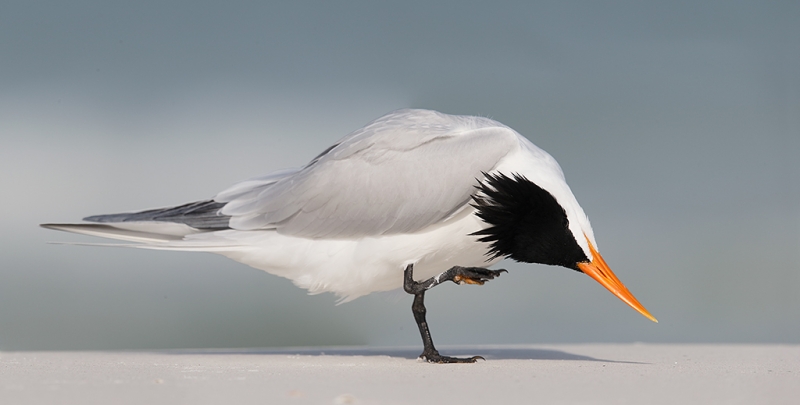
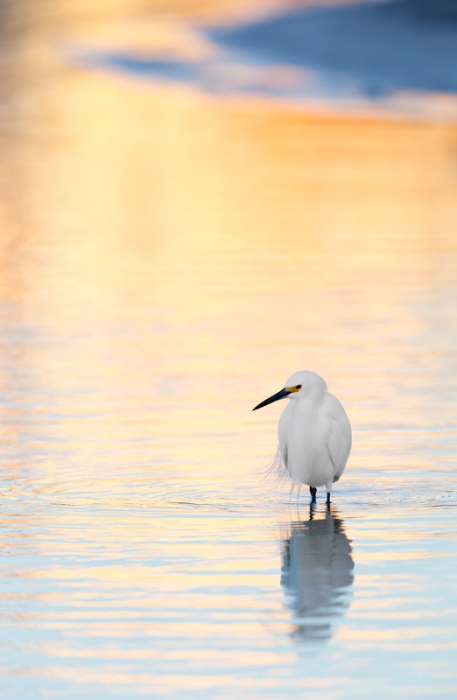
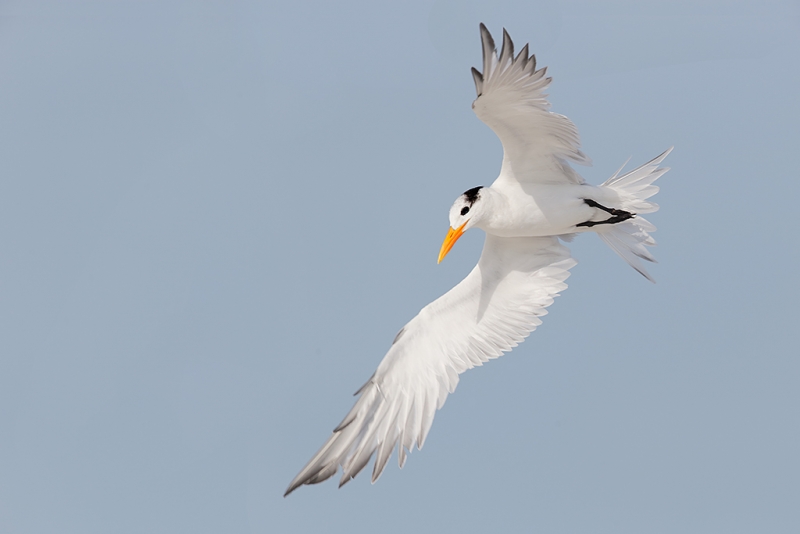
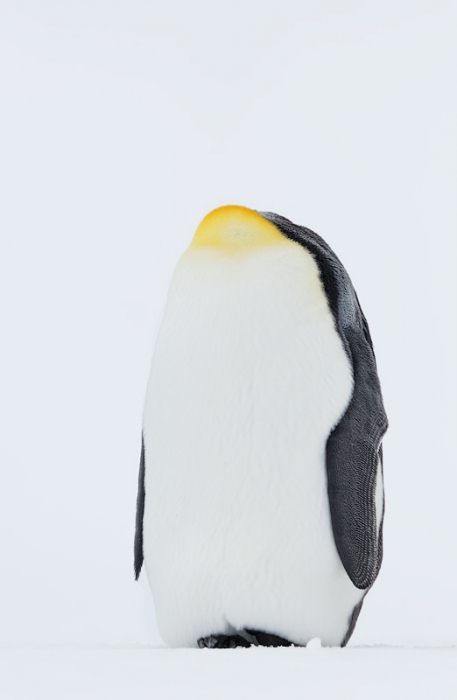
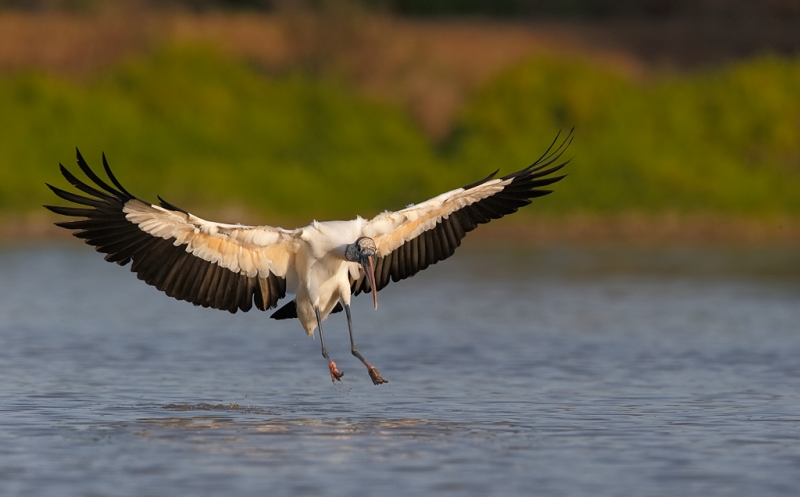
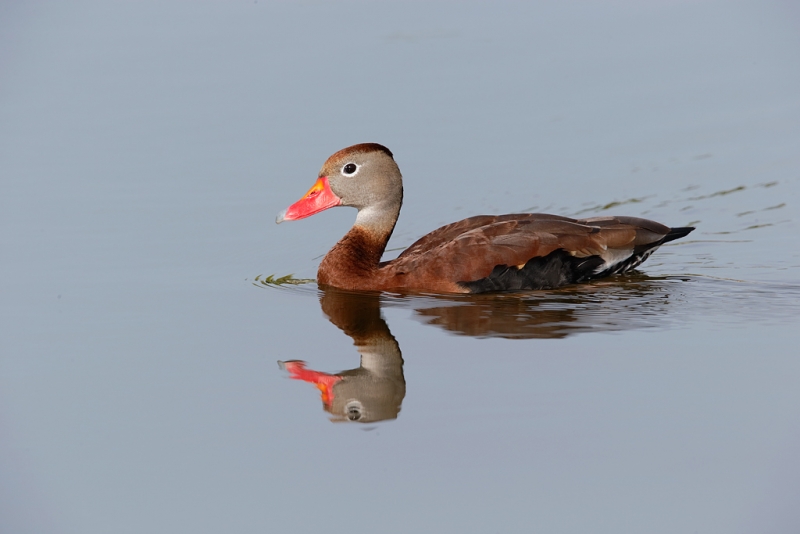
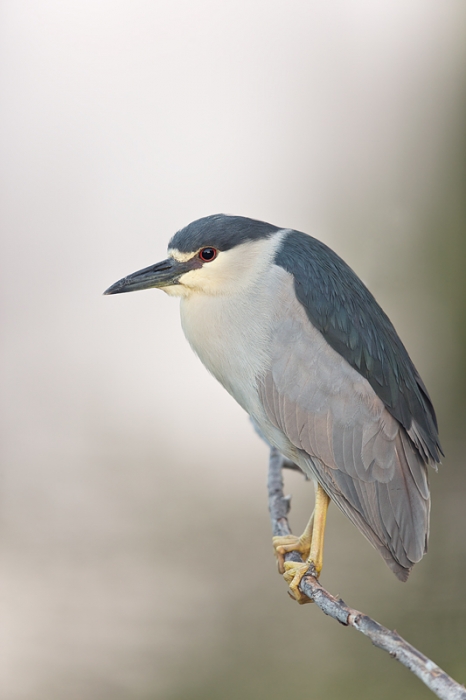
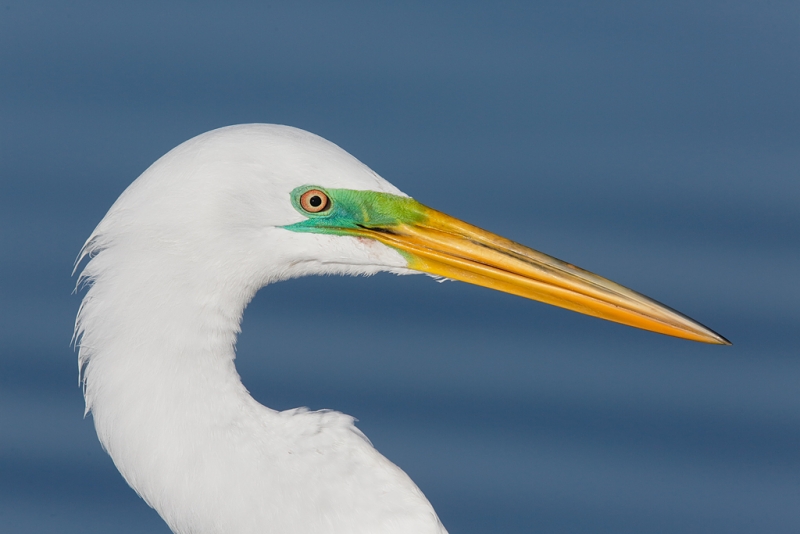













Hi,Artie after using nearly 1year I changed my the 600 II With 500 II and taken 2750 usd back.. By the way ,I also sold my 1Dm4 and bought 5d mark3..
My first impressions are, the new 500 is very and very easy to handle in every situation..And image quality is no worse than 600..in the car its very easy to reach and use the new 500.. For travelling its the best and only lens.. My camera bag can take both lens and camera attached..With 5 Dmark3 1.4 tc works suberb.. Also I can enhance the image pixel to 36 millilion on ACR and no visiable image detoriation..
These are first impressions and I m happy..thank you
Glad that you love your 500 II. Where do you live? artie
Arti I live in İstanbul.. We have a great website here www. trakus.org , I have your great book and also many of my birder friends read and know your blog.. you are doing great for the world.. Be sure I m always take a look at to BH via your link:))
🙂
Hi, Artie. Thanks again for this. A semi-related question. I own a Canon 2X TC II. Would I notice any improvement using a 2X TC III with either my Canon 400 f/5.6L or my Canon 70-200 f/2.8L IS II lens? I understand that there is a clear improvement with the new 500 and 600 lenses.
Dear Artie,
you were so kind and let me try your 600mm lens, when we were in Texel.
Can you believe this: I ordered my own 600mm f 4 IS II lens and will get it tomorrow!!!
I am so happy and really excited – I can’t wait to hold it in my hand – do you know that feeling?
Just after our workshop in Texel I bought the Mongoose head from your store and like it very much.
Hope, you and Denise are doing well,
thanks for everything,
Rose
Mazel tov! Don’t drop it! Denise says “Hi.” Let us know if you need a Lens Coat. artie
Art,
I tallied the score from your above analysis and the 500 II garners 5 points vs. 2 for the 600. Why is the 600 II the clear winner??? ( I did not count ties, or ‘style’ points, 1 pt for winning a section )
Great shots with both by the way.
Neil
Neil, The 500 II is a great lens. But here is what I wrote: If I could own only one super-telephoto lens for bird photography the no-brainer choice would be the Canon 600mm f/4L IS II. Why? Reach trumps all unless you live in a place with tame birds. artie
Ahhh, the almighty reach card. You are correct. I have been going back and forth on this question the last few weeks. I think MY trump card is lower mass which equates to faster acceleration. I can sometimes get closer, but I cannot swing a heavier mass faster no matter how much gym time I do. 🙂
I went to B&H last week and the 500 feels like my 300.
The 500 is perfect for many folks. Denise Ippolito is seriously considering selling her 600 II (too big and bulky) and going to the 500 II. artie
Monopods can be very handy for sit-down-and-wait static subjects.
It will be a long time before I spring for one of these lenses. Right now, I am enjoying what Art calls “the toy lens”, Canon 400mm f/5.6L no-IS.
I have to go with the vertical snowy egret. Great colors
Does anyone here have any experience of buying/importing lenses in to the UK? I know I would need to pay VAT and import tax I assume, but have no idea how much it would be and if other taxes apply. The B&H prices are substantially lower than are available her in England needless to say.
Steve, I sent you the B&H Landed cost calculator. With it you can determine the door to door cost of getting a lens to the UK. Please remember to you our affiliate link if you go with B&H. thanks and later and love, artie
Thank you very much for the writeup. As someone in the market for a Canon supertele, it has been very helpful. I have been debating the merits of the 500II and 600II for a few months now (as I save the money…for either…what a weighty price!) I think I’ll be going for the 600 II, as I expect the vast majority of my work to be domestic, and I like a tighter framing.
As for which photo I like best…I think it’s a tough call between the Royal Tern and the Black-crowned Night Heron. I love the wing position of the Tern…quite an amazing shot. On the flip side, I really like the soft tone and even light, as well as the relaxed pose, on the Neron. I guess I am also partial to Herons…always loved the GBH since I was a kid, and am a fan of all herons and egrets these days. Anyway, your work is excellent regardless of the subject, and I always appreciate it as visual examples of what to set my goals to re. my own work.
One additional question, as I did not see anything about this in the blog. How does the 600mm II w/ 1.4x TC III compare to the 800mm f/5.6 L? I know you use the 800mm a lot, and I think you’ve mentioned it is your favorite lens. I know the previous generation 600mm f/4 L with a 1.4x TC was not quite as good as the 800mm in terms of IQ. I’ve heard reports that the 600mm f/4 L II with the 1.4x TC III is actually as good, maybe slightly better than the 800mm.
In your experience, are those statements true? Can the 600/4 II with a 1.4x III replace the 800/5.6 in one’s kit? Or is there still a benefit to owning the 800mm when you really need the best IQ at the greatest reach?
Thanks!
John, John, John. You gotta get with the program. 🙂 Click here and then let me know if you have any questions that I have not addressed. Thanks. artie
Sorry, I missed that one! Thanks! That completely answers my questions. Amazing lens, the 600 II.
“The cost of a new 500 II at B&H is $10,399 while the current B&H price tag on the 600 II is $12,799. You will not find either lens for a penny less anywhere.”
I big to differ on that last bit. You can find these lenses *much* cheaper than at B&H by shopping in Canada. E.g. Camera Canada has the 500mm f/4 IS II for $8,859.97 Canadian, about $8614.46 in USD. The 600mm is also a big savings at $11,489.97 CAD. Other Canadian retailers are also cheaper than B&H. I haven’t checked but they might be cheaper still in other countries.
I’m not sure what import duties to the U.S. would be on these lenses yet, though I intend to find out. But there’s certainly no good reason for someone from outside the United States to buy these at B&H
You are correct. You can save a few bucks, perhaps a few hundred bucks, by buying in Canada. There are, however, duties and taxes and brokerage fees and they often vary. In most cases they are a big surprise to those who purchase from Canada. I have heard of two folks who bought the same lens from the same dealer who were charged vastly differing amounts. In part that may depend on the shipper and the particular customs agent who checks things out at the border.
Not to mention B&H’s outstanding track record of customer service and reliability. Good luck to the person who buys a lens from a Canadian dealer that has problems out of the box. Though such problems are rare they do happen. I once got a Nikon 500 VR for a friend that needed to be returned as soon as I looked at it. It was replaced instantly without question. Good luck sending one back across the border for replacement….
How many big lenses have you purchased from Canada? As you have no clue as to the duties and fees involved I suspect that the answer is zero :).
I wish someone would do such a great comparison of Nikon’s big telephotos. You have given so much useful information for Canon shooters. While all of your images are amazing, of these these the Snowy Egret is my favorite as I love the inclusion of the sky. It gives a great palette of colors and sets a mood for the shot. Thanks!
Thanks, Artie. This is a wonderfully helpful and generous analysis.
Even if I don’t buy one of those lenses through BAA–that would mean I won’t buy one at all–I will be buying something through your link to B&H to thank you.
Thanks Art. I bought my 500 II in India as I get a 2 yr warranty. I live in Hyderabad, India BTW.
All good!
One thing is unclear. If one already owns the 600mm IS II; what the 500mm is needed for?
One thing is clear; you need to read what I wrote :). I use the 500mm when I need to travel lighter be it on a plane, on a long trip, or when photographing at places with very tame birds….
Guru Artie,
The results from my trips to Costa Rica and Florida with the 600 II have been fantastic. I have not used the 500 II but can say that the 600 II produces images which are super sharp, this is when I’m hand holding it and keeping the IS at 1. The extra reach, sharpness and the hand holdability makes this lens a hands down winner for me. Extra bonus points for this lens as I don’t see the need to own the 800mm lens.
Thank you
Gaurav
Neither do I, except for folks who are not comfortable using the 2X TC or are not able to make sharp images with it. I trust that you are home safely….
I would like to see a comparison of the 600 and the 500 with the same type of shots –
Might happen, might not. I need to have both lenses on a tripod in the same place at the same time. Not an easy request….
My favorite is the vertical Snowy Egret. I think its safe to say 99% of anyone else would’ve went horizontal and miss That beautiful color in the upper right.
Doug
Dear Art,
Thank you for comparing these two great super telephoto lenses! You have covered all aspects of the lenses and the situations where they might be better in the field. You did not mention sharpness. Is there a slightest of difference in sharpness between the two? I own the 500 II and it is razor sharp on my 7D and the reach I get with the crop body and the 1.4 X is just awesome.
Thanks
Sanjeev
Both are ridiculously sharp, even with the 2X III TC. I sure hope that you used our B&H affiliate link as a thank you for all the work I do here and the free info that I provide.
ps: Are you in the US?